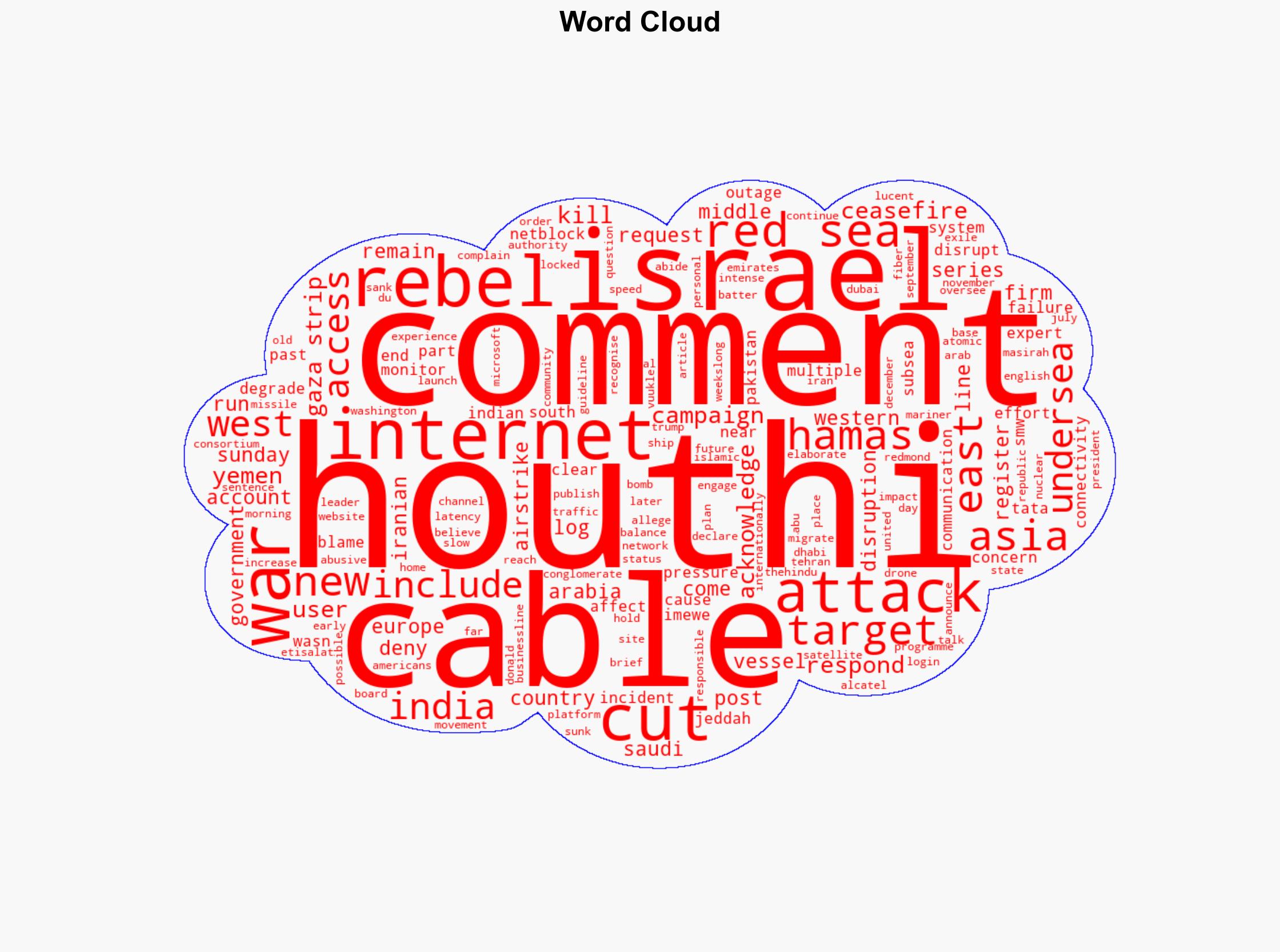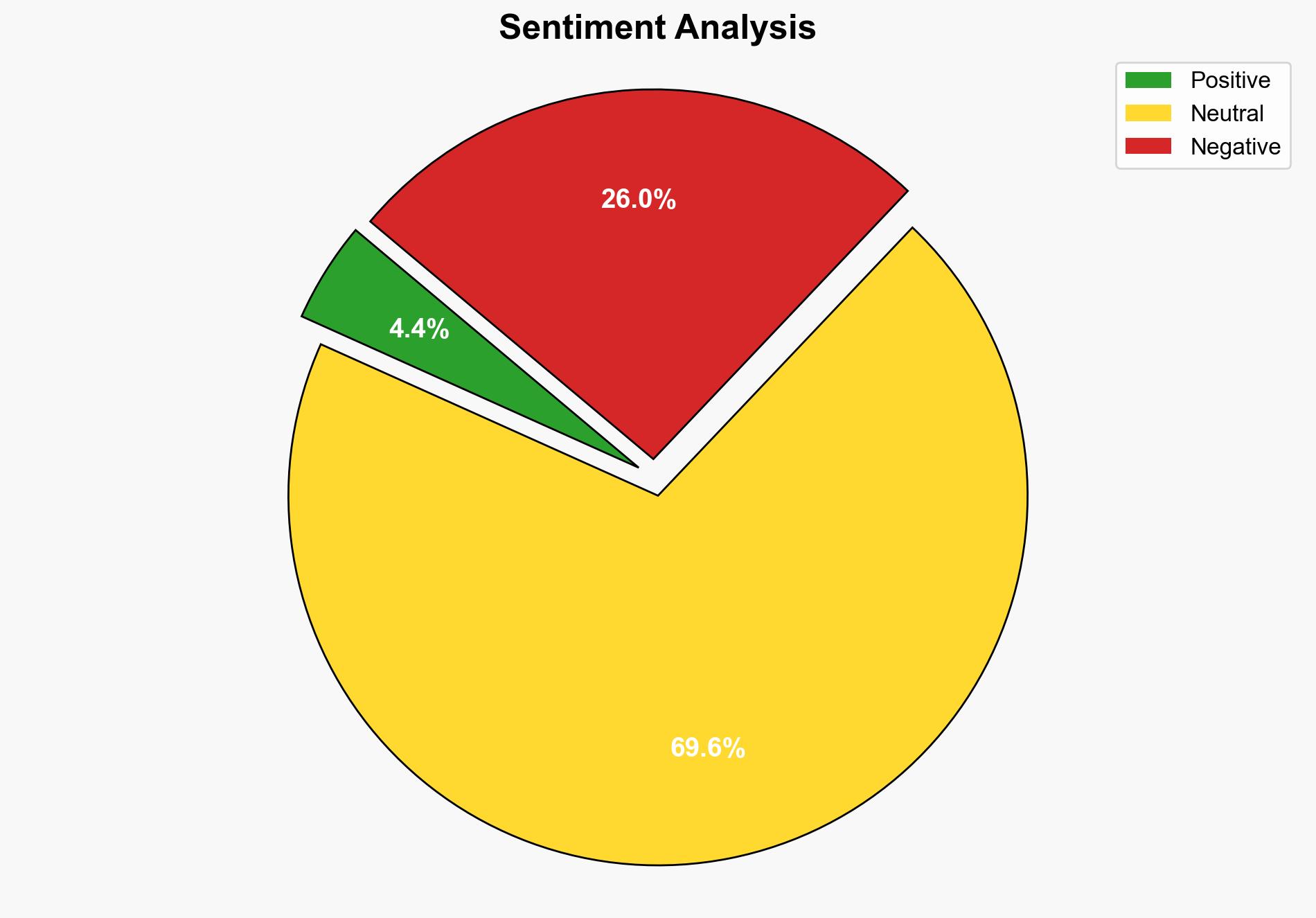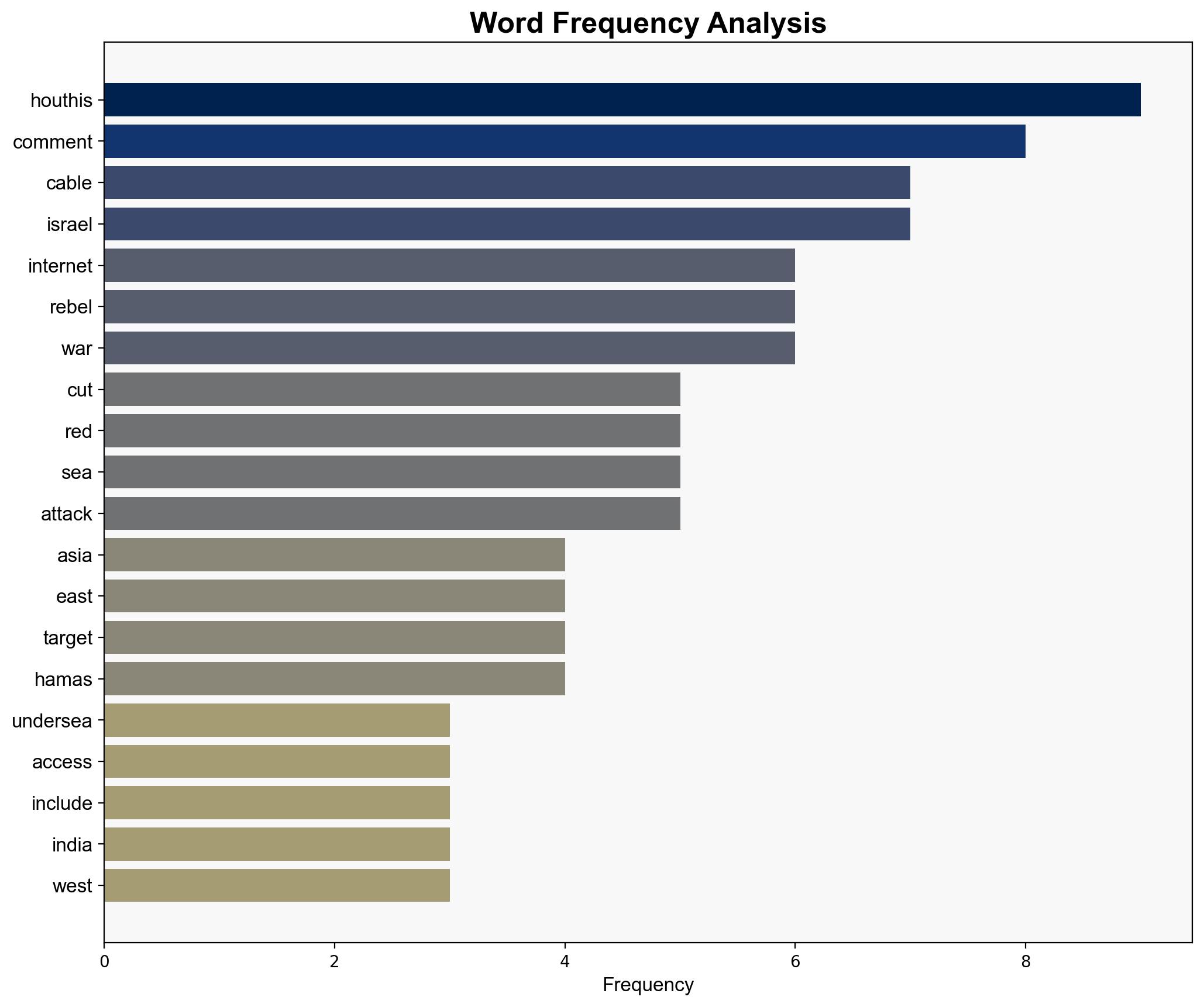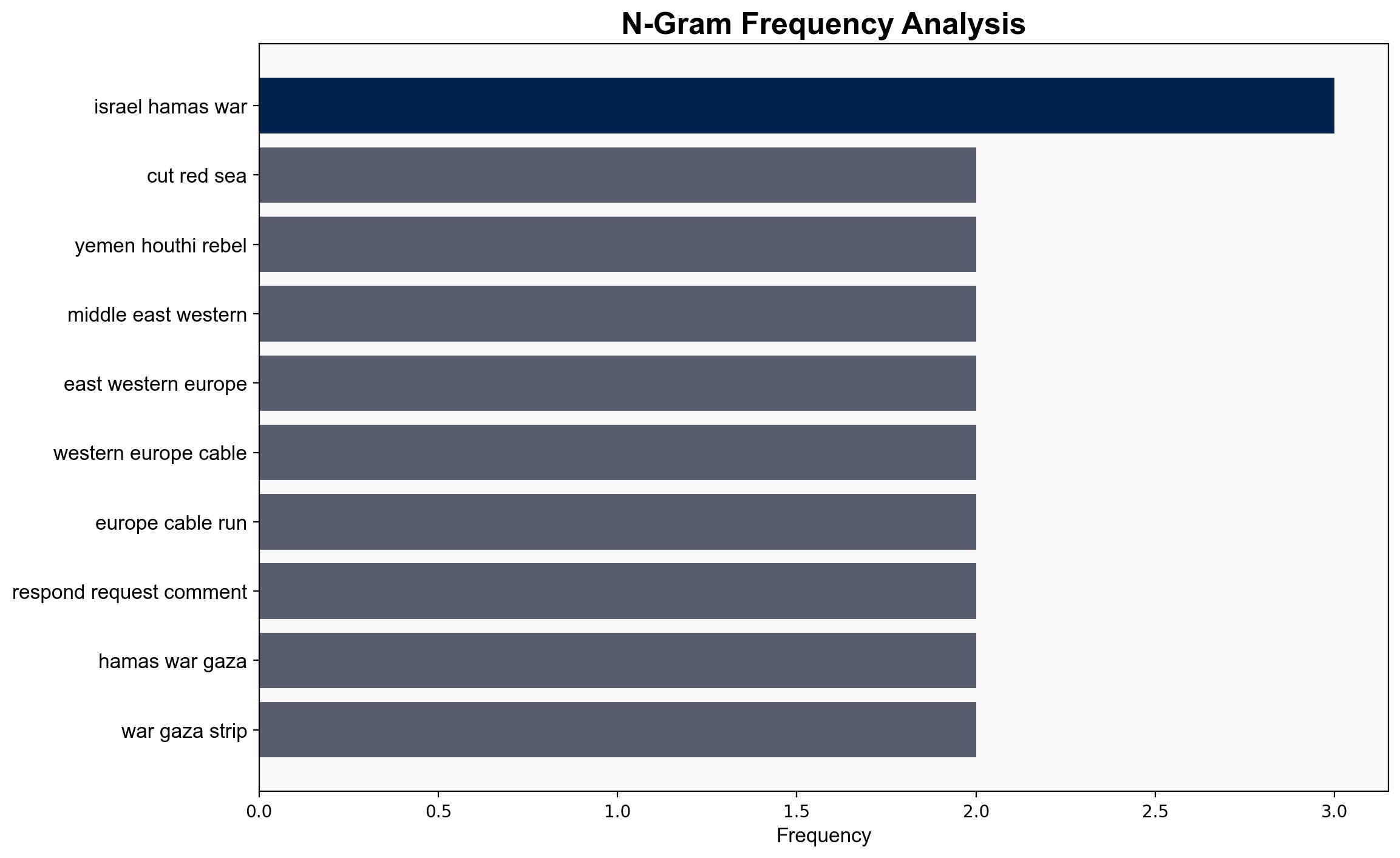Undersea cables cut in Red Sea disrupting internet access in Asia West Asia – BusinessLine
Published on: 2025-09-07
Intelligence Report: Undersea cables cut in Red Sea disrupting internet access in Asia West Asia – BusinessLine
1. BLUF (Bottom Line Up Front)
The most supported hypothesis is that the undersea cable disruption in the Red Sea is a result of deliberate sabotage by non-state actors, potentially the Houthis, despite their denial. This is based on the pattern of previous attacks and the geopolitical context. Confidence level is moderate due to lack of direct evidence. Recommended action includes enhancing surveillance and protection of critical infrastructure and engaging in diplomatic efforts to de-escalate regional tensions.
2. Competing Hypotheses
1. **Deliberate Sabotage by Non-State Actors**: The cable cuts are a strategic move by the Houthis or aligned groups to exert pressure on regional adversaries, leveraging the ongoing Israel-Hamas conflict.
2. **Accidental Damage or Technical Failure**: The disruption is due to accidental damage from maritime activities or technical failures unrelated to any hostile intent.
Using the Analysis of Competing Hypotheses (ACH) 2.0, the first hypothesis is more supported due to the historical context of Houthi attacks in the region and the strategic advantage gained by disrupting communications. The second hypothesis lacks supporting evidence and does not align with the current geopolitical tensions.
3. Key Assumptions and Red Flags
– Assumption: Non-state actors have the capability and intent to target undersea cables.
– Red Flag: Houthis’ denial of involvement could be a strategic deception.
– Blind Spot: Lack of direct evidence linking the Houthis to the incident.
– Inconsistent Data: No clear technical analysis provided on the cause of the cable cut.
4. Implications and Strategic Risks
– **Economic Impact**: Prolonged internet disruptions could harm regional economies, affecting businesses and communications.
– **Cybersecurity Threats**: Increased vulnerability to cyber-attacks as traffic reroutes through less secure channels.
– **Geopolitical Tensions**: Potential escalation of regional conflicts if state actors are perceived to be involved.
– **Psychological Impact**: Public uncertainty and fear due to disrupted communications and potential for further attacks.
5. Recommendations and Outlook
- Enhance monitoring and security measures for undersea cables, including collaboration with international partners.
- Engage in diplomatic dialogues to address and de-escalate regional tensions.
- Scenario Projections:
- Best: Quick resolution and restoration of services with no further incidents.
- Worst: Escalation of regional conflicts leading to broader disruptions.
- Most Likely: Gradual restoration with intermittent disruptions and increased security measures.
6. Key Individuals and Entities
– Houthis (as a group)
– Alcatel-Lucent (overseeing the cable system)
– Tata Communications (involved in the cable system)
7. Thematic Tags
national security threats, cybersecurity, counter-terrorism, regional focus





